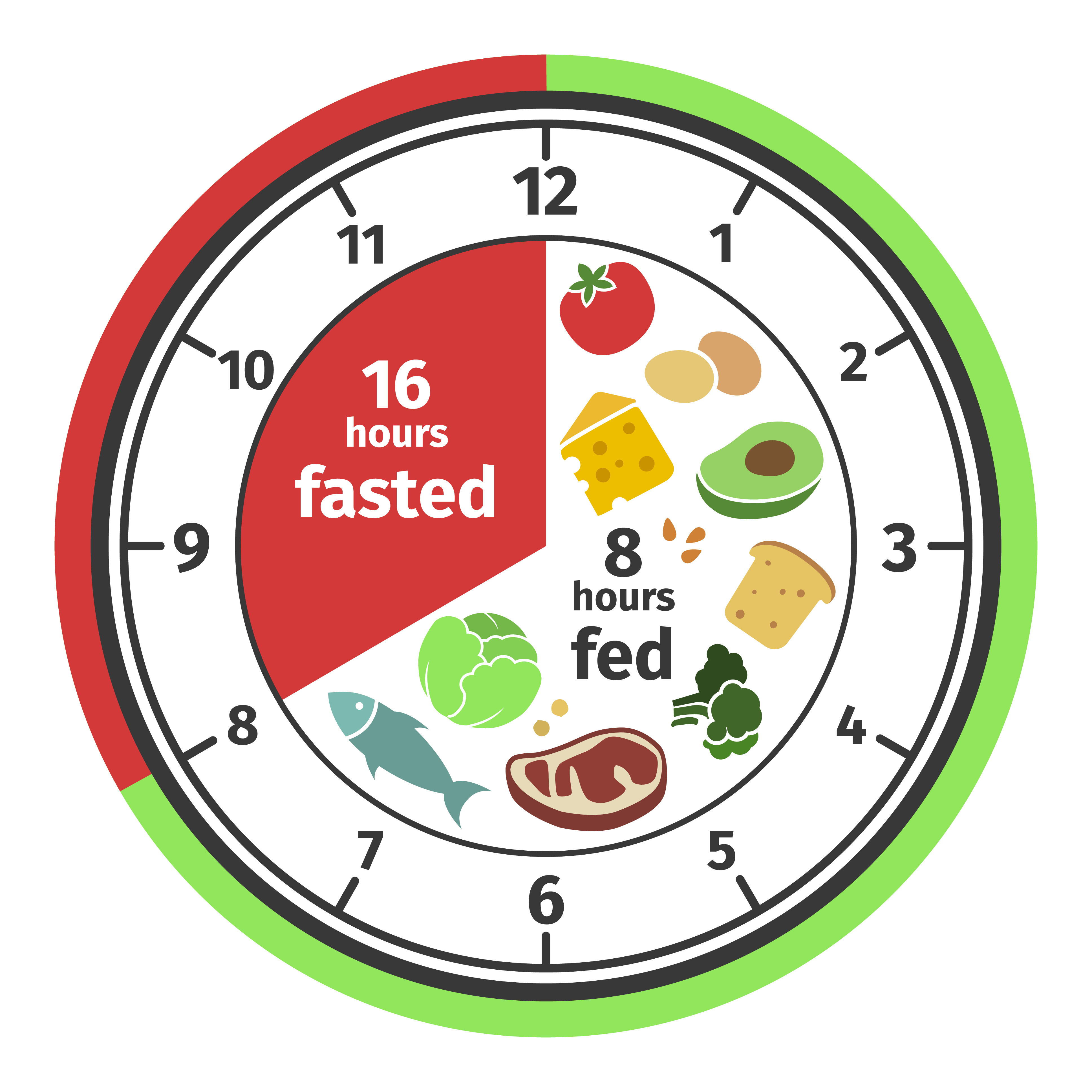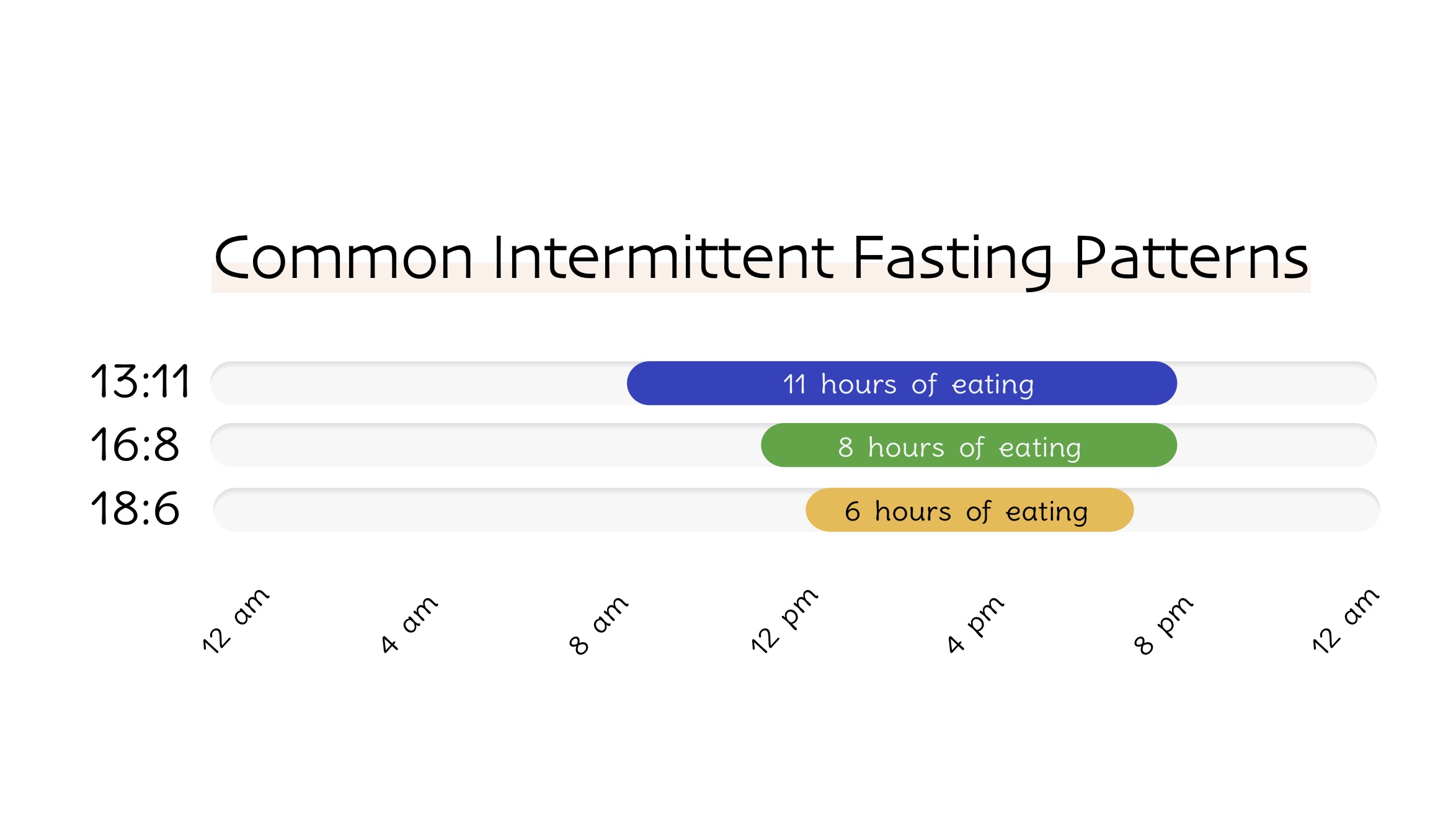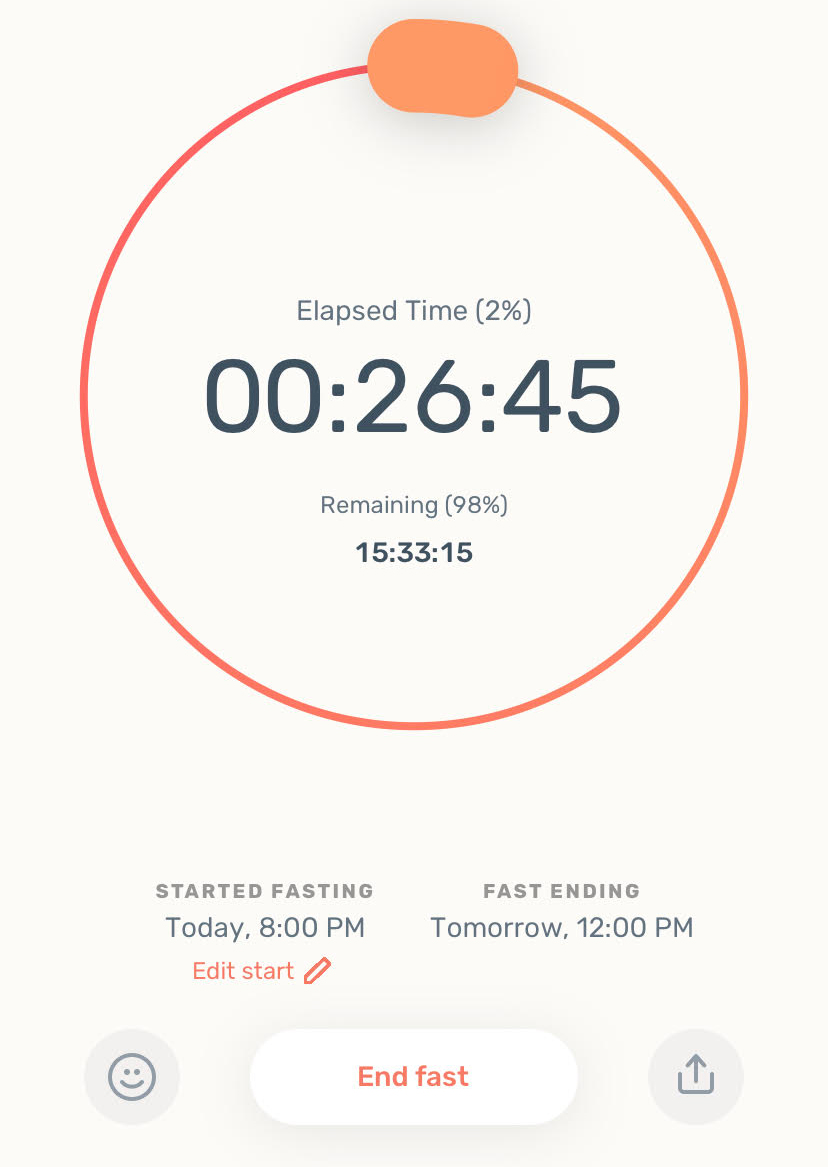Banner Image: © sewcream / Adobe Stock
Eating on a Schedule

Last time, I shared some tips on how to organize your life to reach max productivity. But even a perfectly planned day can fall apart if you’re feeling off. I’ve found diet to play a huge role in how I feel day to day. I’ve learned that when you eat is just as important as what you eat when it comes feeling your best.
Maybe you’ve heard of intermittent fasting from celebrities such as Dwayne “The Rock” Johnson, Hugh Jackman and Jennifer Anniston. Simply, intermittent fasting is an eating pattern that intentionally cycles between periods of eating and fasting. Maybe you’ve also heard of the promises of weight loss and anti-aging among other lofty benefits touted by influencers. But does intermittent fasting deliver on all that it promises? I’m here to offer some insight by sharing my experiences and some science about intermittent fasting.
A Closer Look
Some varieties of intermittent fasting include alternate-day fasting (alternating between days of normal eating and days of little to no calories), 5:2 intermittent fasting (eating normally for 5 days each week), and time restricted feeding. Time restricted feeding is probably the most popular flavor of intermittent fasting and is the one I have the most experience with. Time restricted feeding, as the name suggests, means eating all of your food during a set portion of the day and then fasting for the remainder of the day. For example, I eat all my meals within 8 hours of the day and then fast for the other 16 hours. The exact timing can look different for everyone but some of the most common are aforementioned 16:8, as well as 13:11 and 18:6.

What are the benefits?
One big benefit that I alluded to above is that I just feel better. I find that my energy is more constant throughout the day. When I’m adhering to intermittent fasting, my body uses energy more efficiently so I experience less sugar highs and crashes!
The most obvious benefit is a lower caloric intake. I’m not augmenting my diet (for example, cutting out desserts), but by restricting when I can eat I naturally consume less food. If I’m following the 16:8 schedule, I won’t be consuming any late night snacks. I suppose I could cram a lot of terrible calories into my 8 hours of eating and still be “following the rules” but this is difficult with my busy schedule.
In addition to the health benefits, intermittent fasting makes my life simpler. With the 16:8 schedule, I am typically eating two meals a day instead of three, so one less meal to purchase, plan, and cook. However, I do spend extra time planning out these two meals. When I am looking at recipes, I ask myself: will this meal provide enough energy for the day? This leads me to prepare meals with high nutritional value.
Also, I don’t consider intermittent fasting a diet—there’s no list of “eat this and don’t eat this”. Instead, I have the freedom to eat whatever I want within your time frame. Obviously, I should eat more fruits and veggies and lay off the Girl Scout cookies, but I don’t have to live with the guilt that comes with “cheating” on a diet. A lifestyle change is much more sustainable than a restrictive diet.
What about the science?
Much of the weight loss benefits from intermittent fasting boils down to our metabolism. Our main sources of energy are glucose and fatty acids. When we eat, we use the glucose in our food for energy. What we don’t use immediately is stored as glycogen (short-term storage) or turned into fat (long term storage). Once our blood glucose level has returned to normal and we can’t rely on glucose for energy, our body must find other sources. It first turns to the glycogen we stored up from that excess glucose earlier. Our liver converts the glycogen back into glucose that can be readily used by cells. Once we deplete our glycogen stores, our body breaks down our fat!
If we keep eating meals at regularly spaced intervals throughout the day, we maintain our blood glucose at a slightly elevated level to be used as energy. We don’t have to convert to glycogen storage for energy and rarely have to break down stored fat to use for energy so it is harder to lose weight. In addition to weight loss, there are also studies to back up the fact that intermittent fasting can lead to improved physical function and cognition as well as decreased inflammation, cardiovascular disease, and diabetes.
Intermittent Fasting in Practice

Tips for Success:
- HYDRATE. Drink water before, during and after your fast (so all the time). Water can curb hunger pains during the fast.
- Prepare a healthy meal for lunch (or your first meal to break the fast) to avoid that glucose spike and crash.
- Avoid processed foods and empty carbs as they won’t keep you full as long.
Disclosure: I am not a dietician, and I’m just sharing what I’ve found works for me. Ultimately, I recommend using an eating approach that is sustainable and realistic for your lifestyle.